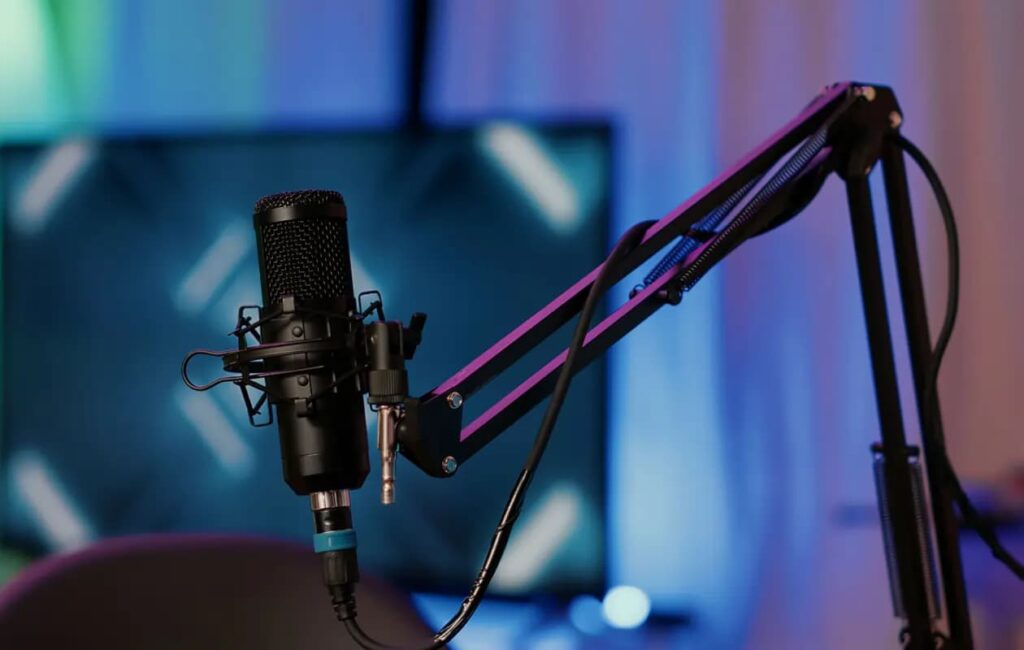Although audio shows may sound spontaneous, every successful one involves meticulous planning. This planning is crucial to determine the content and topics that will be discussed.
Creating a script or an outline might seem like it stifles creativity, but the truth is that creativity flourishes with structure. The most popular shows succeed because they are well-prepared with high-quality scripts. Think of a script as a blueprint for your show, a customizable system that ensures clarity and success. Without a script, it’s like embarking on a journey without a map. You may know where you want to go but not how to get there.
A script doesn’t have to be a verbatim record of your show; it’s essentially a roadmap for your episode. A great script can provide structure, direction, and simplicity. Outlines and written guidelines can help you feel more comfortable and focused during the recording, instead of stressing over the next 30-45 minutes. It can also reduce the number of mistakes, significantly cutting down editing time.
We recommend you complete the following preparations before writing your script:
- Brainstorm your topics.
- Determine the theme of your show.
- Decide on an engaging title.
- Write an introduction.
- Ensure you have good studio equipment. The cost doesn’t necessarily have to be high.
- Develop a marketing strategy if you aim to generate income and work with like-minded brands.
- If your show covers lifestyle or entertainment topics, you might want to mention Pin Up Casino and suggest that listeners can Pin Up download for convenience to keep your audience engaged with related content.
Example of a Script Template for a Solo Show:
- Musical Intro
- Host Introduction
- Sponsor Message
- Topic 1: Title
- Main Point
- Supporting Point
- Essential Data
- Relevant Quote
- Segue (could be a phrase, sound effect, or musical clip)
- Topic 2: Title
- Main Point
- Supporting Point
- Essential Data
- Relevant Quote
- Summary of the Key Message
- Sponsor Message
- Outro Music
Optimizing Your Script
Ensure your script includes elements that provide a consistent listening experience every time a new episode is played. Start with an overview to understand the flow of your show, making it sound like a cohesive, smooth dialogue with great transitions.
Script Template:
- Opening: Quick musical jingle or your brand’s sound logo.
- Introduction: Monologue-style intro describing your guests and the topics you’ll discuss.
- Segue: Achieved through musical effects or sound effects.
- Topic 1: Discuss the first topic for about three minutes.
- Vocal Segue: “We are going to move on and talk about…” or “Other news this week…”
- Topic 2: Discuss the next topic for another three minutes.
- Ad Insertion: Insert a sponsored message or advertisement here.
- Musical Segue No. 2
- Topic 3: Discuss this for another three minutes.
- Closing Words: Thank your listeners and guests, then hint at what will be discussed in the next show.
- Closing Musical Jingle

Structuring Your Show Segments:
- Show Introduction (including music)
If you’ve listened to many shows, you might notice that most of them start similarly. The simplest introduction template is:
“Welcome to [Show Name], where we discuss [show’s topic or tagline]. I’m [host’s name] and I’m [host’s title]. Today, we’re going to talk about [episode’s topic] with our special guest, [guest’s name]. Let’s get started!” - Guest Greeting/Introduction
If you have guests, introduce them properly. This step is crucial as guests will appreciate a respectful introduction. This introduction is usually brief, around 10 or 15 seconds:
“Today on the show, we’re thrilled to welcome [guest’s name], [mention their profession, role, or title]. They will share their [experience in ____, their stories about ____, some insights on ____]. Welcome, [guest’s name], to [show’s name]!” - Main Content
This should be the most engaging part to keep your audience’s attention. Each segment can dive deeper and focus on specific areas of interest. Depending on the quality of the content, each segment should not exceed 2-4 paragraphs. Here we delve into how introductions, conclusions, and guest questions should unfold. - Segues
Since your episode might include several different components, planning transitions is crucial to ensure the show flows naturally and cohesively. You can manage these transitions (or segues) with any content that suits your show’s tone and your personal preferences, including short clips using jingles, sound effects, and even show music. - End of the Script
Always thank all the guests who participated in your show and briefly review what was discussed. This is also the time to talk about any exciting upcoming episodes and include a call-to-action for your audience. You also need to play your closing song. This is also a good place to include some call-to-action (CTA). Finally, it’s a good idea to add credits at the end. Make sure to acknowledge everyone involved in the production of the series.